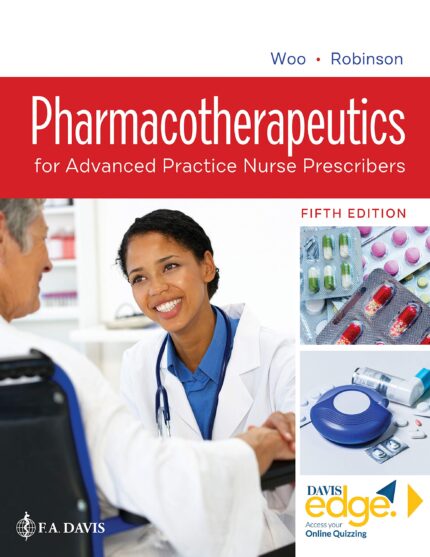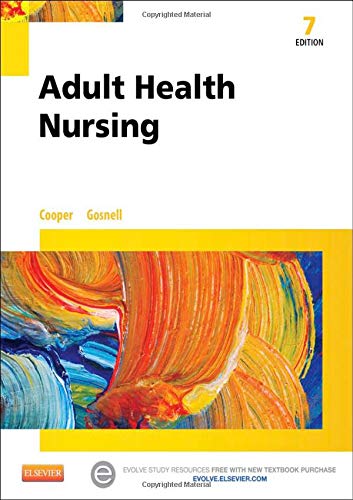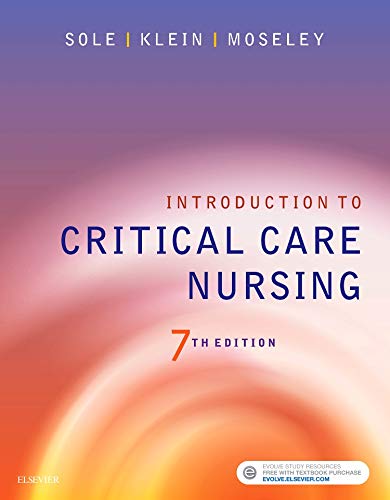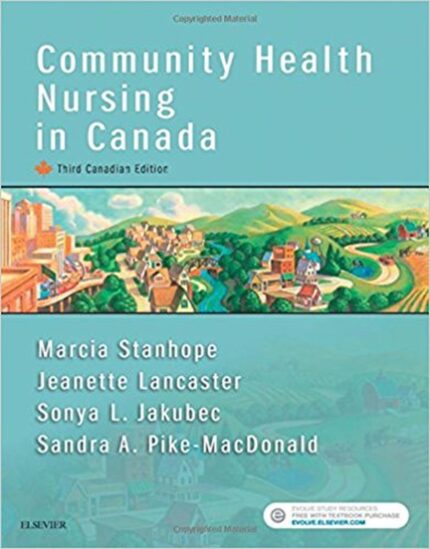Test Bank for Pharmacology and the Nursing Process 8th Edition by Lilley
Test Bank for Pharmacology and the Nursing Process 8th Edition by Lilley
Pharmacology and the Nursing Process 8th Edition by Lilley – Test Bank
Pharmacology and the Nursing Process 8th Edition
Pharmacology and the Nursing Process
Chapter 01: The Nursing Process and Drug Therapy
Test Bank
MULTIPLE CHOICE
1. The nurse is writing a nursing diagnosis for a plan of care for a patient who has been newly diagnosed with
type 2 diabetes. Which statement reflects the correct format for a nursing diagnosis?
a. Anxiety
b. Anxiety related to new drug therapy
c. Anxiety related to anxious feelings about drug therapy, as evidenced by statements such as “I’m upset about having t
my blood sugars.”
d. Anxiety related to new drug therapy, as evidenced by statements such as “I’m upset about having to test my blood su
ANS: D
Formulation of nursing diagnoses is usually a three-step process. “Anxiety” is missing the “related to” and “as
evidenced by” portions of defining characteristics. “Anxiety related to new drug therapy” is missing the “as
evidenced by” portion of defining characteristics. The statement beginning “Anxiety related to anxious
feelings” is incorrect because the “related to” section is simply a restatement of the problem “anxiety,” not a
separate factor related to the response.
DIF: COGNITIVE LEVEL: Understanding (Comprehension) REF: p. 9
TOP: NURSING PROCESS: Nursing Diagnosis
MSC: NCLEX: Safe and Effective Care Environment: Management of Care
2. The patient is to receive oral guaifenesin (Mucinex) twice a day. Today, the nurse was busy and gave the
medication 2 hours after the scheduled dose was due. What type of problem does this represent?
a. “Right time” problem
b. “Right dose” problem
c. “Right route” problem
d. “Right medication” problem
ANS: A
“Right time” is correct because the medication was given more than 30 minutes after the scheduled dose was
due. “Dose” is incorrect because the dose is not related to the time the medication administration is scheduled.
“Route” is incorrect because the route is not affected. “Medication” is incorrect because the medication
ordered will not change.
DIF: COGNITIVE LEVEL: Applying (Application) REF: p. 13
TOP: NURSING PROCESS: Implementation
MSC: NCLEX: Safe and Effective Care Environment: Safety and Infection Control
3. The nurse has been monitoring the patient’s progress on a new drug regimen since the first dose and
documenting the patient’s therapeutic response to the medication. Which phase of the nursing process do these
actions illustrate?
a. Nursing diagnosis
b. Planning
c. Implementation
d. Evaluation
ANS: D
Monitoring the patient’s progress, including the patient’s response to the medication, is part of the evaluation
phase. Planning, implementation, and nursing diagnosis are not illustrated by this example.
DIF: COGNITIVE LEVEL: Understanding (Comprehension) REF: p. 15
TOP: NURSING PROCESS: Evaluation
MSC: NCLEX: Safe and Effective Care Environment: Management of Care
4. The nurse is assigned to a patient who is newly diagnosed with type 1 diabetes mellitus. Which statement
best illustrates an outcome criterion for this patient?
a. The patient will follow instructions.
b. The patient will not experience complications.
c. The patient will adhere to the new insulin treatment regimen.
d. The patient will demonstrate the correct blood glucose testing technique.
ANS: D
“Demonstrating correct blood glucose testing technique” is a specific and measurable outcome criterion.
“Following instructions” and “not experiencing complications” are not specific criteria. “Adhering to new
regimen” would be difficult to measure.
DIF: COGNITIVE LEVEL: Applying (Application) REF: p. 11
TOP: NURSING PROCESS: Planning
MSC: NCLEX: Safe and Effective Care Environment: Management of Care
5. Which activity best reflects the implementation phase of the nursing process for the patient who is newly
diagnosed with hypertension?
a. Providing education on keeping a journal of blood pressure readings
b. Setting goals and outcome criteria with the patient’s input
c. Recording a drug history regarding over-the-counter medications used at home
d. Formulating nursing diagnoses regarding deficient knowledge related to the new treatment regimen
ANS: A
Education is an intervention that occurs during the implementation phase. Setting goals and outcomes reflects
the planning phase. Recording a drug history reflects the assessment phase. Formulating nursing diagnoses
reflects analysis of data as part of planning.
DIF: COGNITIVE LEVEL: Applying (Application) REF: p. 11
TOP: NURSING PROCESS: Implementation
MSC: NCLEX: Safe and Effective Care Environment: Management of Care
6. The medication order reads, “Give ondansetron (Zofran) 4 mg, 30 minutes before beginning chemotherapy
to prevent nausea.” The nurse notes that the route is missing from the order. What is the nurse’s best action?
a. Give the medication intravenously because the patient might vomit.
b. Give the medication orally because the tablets are available in 4-mg doses.
c. Contact the prescriber to clarify the route of the medication ordered.
d. Hold the medication until the prescriber returns to make rounds.
ANS: C
A complete medication order includes the route of administration. If a medication order does not include the
route, the nurse must ask the prescriber to clarify it. The intravenous and oral routes are not interchangeable.
Holding the medication until the prescriber returns would mean that the patient would not receive a needed
medication.
DIF: COGNITIVE LEVEL: Applying (Application) REF: p. 14
TOP: NURSING PROCESS: Implementation
MSC: NCLEX: Safe and Effective Care Environment: Management of Care
7. When the nurse considers the timing of a drug dose, which factor is appropriate to consider when deciding
when to give a drug?
a. The patient’s ability to swallow
b. The patient’s height
c. The patient’s last meal
d. The patient’s allergies
ANS: C
The nurse must consider specific pharmacokinetic/pharmacodynamic drug properties that may be affected by
the timing of the last meal. The patient’s ability to swallow, height, and allergies are not factors to consider
regarding the timing of the drug’s administration.
DIF: COGNITIVE LEVEL: Understanding (Comprehension) REF: p. 13
TOP: NURSING PROCESS: Assessment
MSC: NCLEX: Safe and Effective Care Environment: Management of Care
8. The nurse is performing an assessment of a newly admitted patient. Which is an example of subjective data?
a. Blood pressure 158/96 mm Hg
b. Weight 255 pounds
c. The patient reports that he uses the herbal product ginkgo.
d. The patient’s laboratory work includes a complete blood count and urinalysis.
ANS: C
Subjective data include information shared through the spoken word by any reliable source, such as the patient.
Objective data may be defined as any information gathered through the senses or that which is seen, heard, felt,
or smelled. A patient’s blood pressure, weight, and laboratory tests are all examples of objective data.
DIF: COGNITIVE LEVEL: Understanding (Comprehension) REF: p. 7
TOP: NURSING PROCESS: Assessment
MSC: NCLEX: Safe and Effective Care Environment: Management of Care
MULTIPLE RESPONSE
1. When giving medications, the nurse will follow the rights of medication administration, which include what
rights? (Select all that apply.)
a. Right drug
b. Right route
c. Right dose
d. Right diagnosis
e. Right time
f. Right patient
g. Right documentation
ANS: A, B, C, E, F, G
The Six Rights of medication administration must always include the right drug, right dose, right time, right
route, right patient, and right documentation. The right diagnosis is incorrect.
DIF: COGNITIVE LEVEL: Remembering (Knowledge) REF: p. 11
TOP: NURSING PROCESS: Implementation
MSC: NCLEX: Safe and Effective Care Environment: Safety and Infection Control
OTHER
1. Place the phases of the nursing process in the correct order, with 1 as the first phase and 5 as the last phase.
1. Planning
2. Evaluation
3. Assessment
4. Implementation
5. Nursing Diagnoses
ANS:
3, 5, 1, 4, 2













